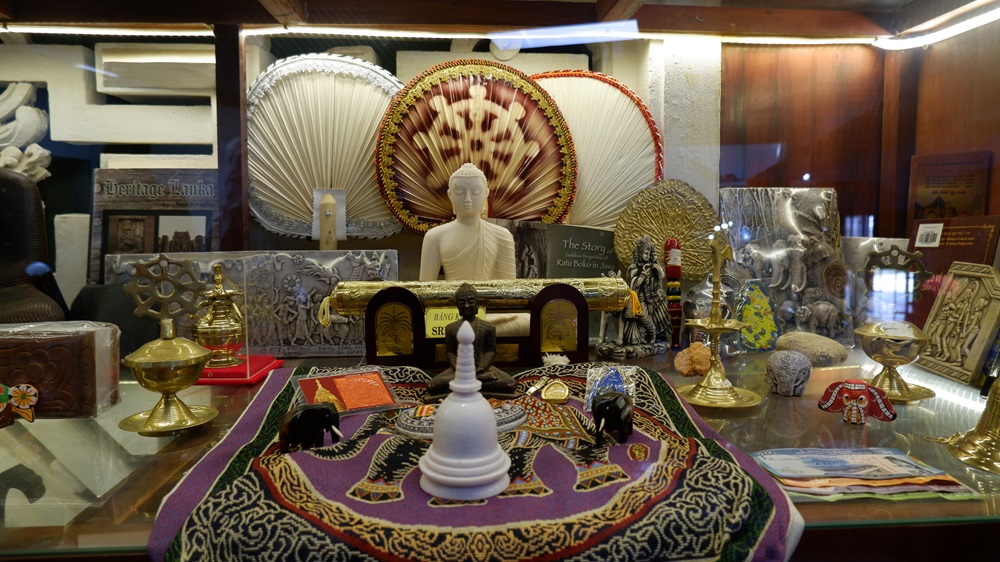The Museum of Buddhist Culture, situated on the second floor of the main hall of Quan The Am Pagoda in Ngu Hanh Son District, is dedicated to preserving and showcasing invaluable treasures of Buddhist culture. It is a vital resource for venerable monks, nuns, laypeople, and Buddhist followers seeking to deepen their understanding of Buddhist culture. Additionally, it is a significant spiritual destination for visitors looking to explore the scenic beauty of Marble Mountains.
Originally built in 1975, Quan The Am Pagoda underwent a major renovation starting in 2010. The aim was to host community cultural festivals, meet visitors’ spiritual needs, and provide an ideal environment for Buddhist followers to study.
The pagoda has established the first Museum of Buddhist Culture in Vietnam within the temple grounds, thanks to the generous support and contributions from kind-hearted individuals, philanthropists, and believers from all over. This achievement is a testament to the collective efforts of venerable monks, nuns, laypeople, Buddhist followers, visitors, and residents.
The Museum of Buddhist Culture opened its doors to the public in 2016 and boasts a remarkable collection of over 500 artifacts showcasing Vietnamese Buddhist art and artifacts from various Asian countries. The abbots of Quan The Am Pagoda, diligently amassed these treasures over the past two decades.
The museum’s collection comprises artifacts dating back several decades, with some artifacts tracing their origins to early times. Among the temple’s artifacts are Buddha statues, wooden scriptures, worship items, and musical instruments, spanning from the 7th to 8th centuries up to the late 19th and early 20th centuries, all originating from the establishment of Quan The Am Pagoda, a revered spiritual site in the Marble Mountains.
Furthermore, the museum is home to many rare and precious Buddhist statues crafted from diverse materials such as wood, jade, bronze, iron, and stone. Experts have deemed Many of these statues national treasures due to their exceptional artistic and sculptural value. Notable pieces include the jade statue of Quan The Am with a child, traditionally found in the Nguyen dynasty’s royal court; a group of 8 Maitreya Buddha statues; a mother-of-pearl inlaid painting portraying the Buddha’s enlightenment, surrounded by generals, monks, and animals; the Four-Armed Quan The Am statue; the Laughing Buddha statue, and numerous amber and gemstone statues.

The Museum of Buddhist Culture takes excellent care in selecting and showcasing artifacts, ensuring they hold immense spiritual and material value.
Venerable Thich Hue Vinh, the Quan The Am Pagoda abbot, emphasizes the thorough scientific appraisal and meticulous selection process by experts. These artifacts offer a window into the ancients’ messages, conveying the Zen language known as “Perceiving the Nature of Enlightenment”.
Researchers highlight these artifacts’ cultural and historical significance, emphasizing the need for preservation, promotion, and further study.

By visiting the museum, individuals immerse themselves in a unique spiritual and cultural space, gaining a deeper understanding of Buddhism’s role in the nation’s history.
Visitors like Mr. Vo Duy Phong express how each visit expands their knowledge and fosters positive, peaceful energy, helping them orient themselves toward goodness. The Museum of Buddhist Culture houses statues and features a remarkable collection of paintings of Buddha on silk and hand-embroidered pieces dating back over 300 years. Each item in the museum has a captivating and enigmatic story, conveying cultural and historical significance linked to the enduring culture that shapes people’s spiritual and high-quality way of life.
A visit to the Museum of Buddhist Culture offers a unique opportunity to immerse oneself in a spiritual and cultural realm where the pervasive influence of Buddhism throughout the nation’s history is keenly felt. The museum reminds visitors of the principles of good living and is a collective effort to preserve the nation’s cultural and historical heritage.
DANANG CENTER FOR TOURISM PROMOTION